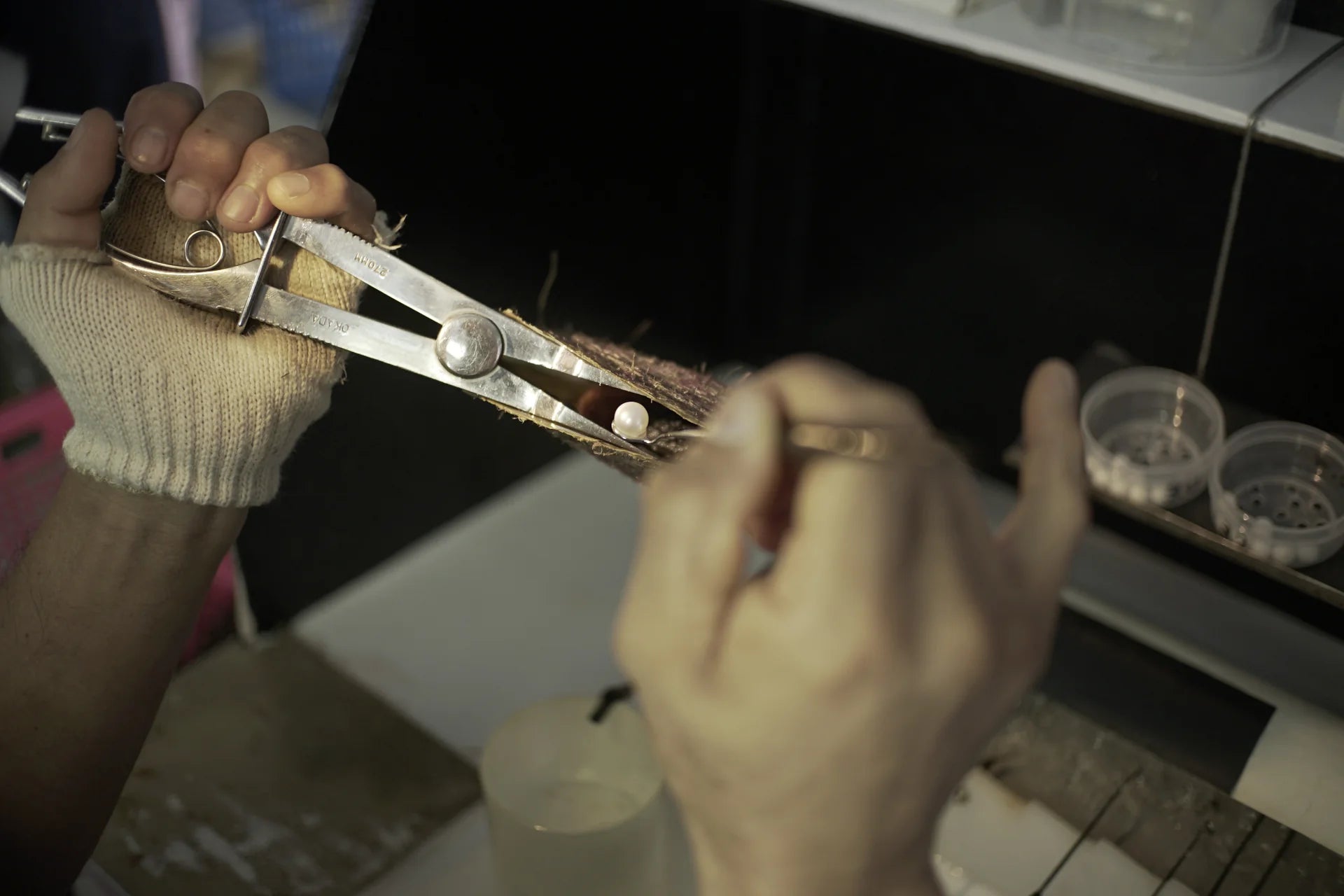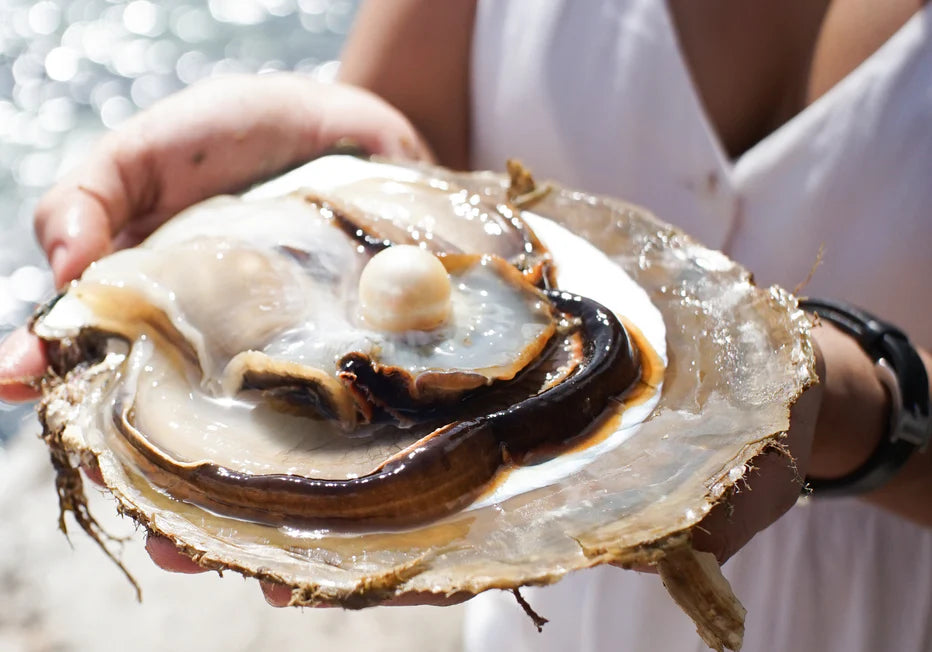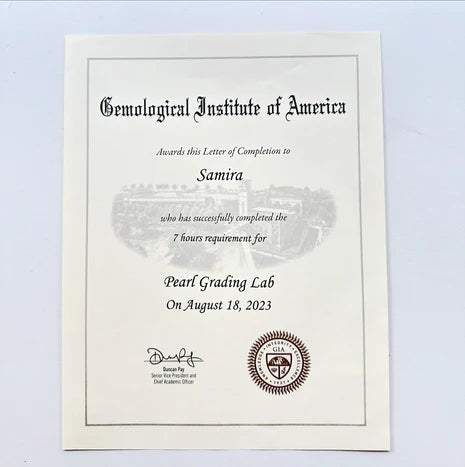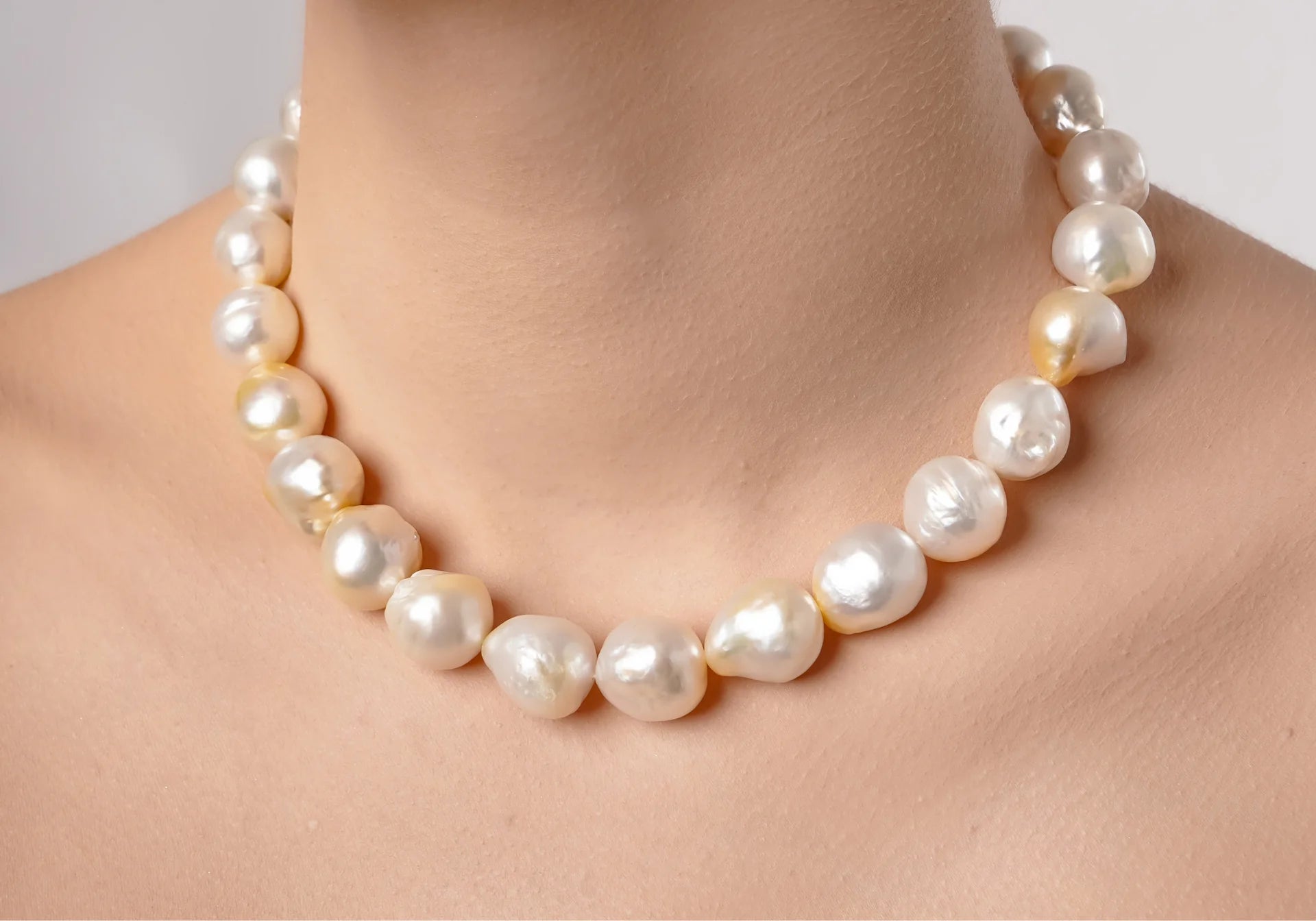PEARL EDUCATION

Cultured vs. Natural Pearls: A Story of Creation
Pearls, nature's marvelous gifts, come in two distinct forms: natural and cultured. While natural pearls are rare treasures formed randomly in nature, cultured pearls are born from a harmonious collaboration between nature and human ingenuity. At MIRA, we focus on sea-cultured pearls, a realm where the art of cultivation meets the mystery of the ocean.
Pearls rank between 3½ and 4½ on the Mohs' scale of hardness, which ranges from 1 (softest, like Talc) to 10 (hardest, like Diamond). This means that pearls are relatively soft and can be easily damaged if not handled with care.
Unlike freshwater pearls, that’s often seen as mere accessories, our sea-cultured pearls belong to the elite circle of nine precious stones, the only ones derived from living creatures.
The 7 gemstones of the world
- diamond
The most famous of all gemstones, the diamond, has been valued since ancient times as a symbol of purity and eternal love. - ruby
Rubies are another ancient gemstone valued for their rich red color. - emerald
Emerald has long been known as the most beautiful of green gemstones and is now considered one of the most valuable raw materials in the world. - Cat's eye
Also called cymophane, cat's eye chrysoberyl or chatoyan chrysoberyl, this stunning gemstone is extremely rare. - sapphire
Trace elements such as titanium, iron and magnesium give it its characteristic blue hue. - Pearls
Pearls have an organic and not a geological origin. Instead, they are formed when irritants, such as a piece of sand, enter an oyster or other mollusc. To protect itself against the irritant, the mussel covers it with a layer of its liquid secretion. - alexandrite
Due to its ultra-rare color-changing qualities, this stone takes pride of place among the seven gemstones.

The Splendor of Sea-Cultured Pearls
Our dedication lies in offering sea-cultured pearls, including the illustrious South Sea, Akoya, and Black Tahitian varieties. Each variety tells its own story: from the South Sea's grandeur, the refined elegance of Akoya to the exotic allure of Black Tahitian pearls. Our pearls not only symbolize luxury but also represent a legacy of beauty and finesse.
Pearls are primarily composed of calcium carbonate, bound together with a protein known as conchiolin. They also contain a small amount of water. Under a microscope, the surface of a pearl reveals a pattern similar to contour lines on a map, known as ripples. Each pearl has a unique ripple pattern, making every pearl distinct.
The Pinctada pearl family
Pearls and Their Connection with You
Wearing pearls more often enhances their beauty, as they blend with your skin's natural oils, adding to their luster. Caring for pearls is effortless; a simple wipe with a soft cloth after wearing keeps them in pristine condition, safeguarding them from everyday elements.
The Journey of a Pearl: From Oyster to Ornament
Every pearl's journey begins within the mantle of an oyster, where layers of nacre accumulate to create a lustrous gem. This process, whether natural or cultured, is a testament to the marvels of nature and human perseverance. At MIRA, we bring you these wonders from the depths of the oceans to the palm of your hand.

A Spectrum of Choices: From Golden Champange Rays to Midnight Mystique
Our collections showcase a variety of hues and sizes, from the golden glow of White-lipped oysters to the enigmatic depths of Black-lipped pearls. Each pearl, whether a radiant South Sea white or a mesmerizing Black Tahitian, is a tribute to the unique environments that nurture them and the variation of oyster species.
Yes, only a few types of oysters can make pearls, such as the Akoya Pearl Oyster and the Black-lipped Pearl Oyster. The Akoya Pearl Oyster is used for pearl cultivation in Japan and has a yellowish green or blackish purple shell. The Black-lipped Pearl Oyster has a large shell with a pearly luster and a black border. They thrive in warm waters and are found in the Pacific and Indian Oceans. The White-lipped Pearl Oyster is the largest and produces large "South Sea Pearls". It can be found in the eastern Indian Ocean and southwestern Pacific.
Pearl Farming: Nurturing the Future
The cultivation of pearls is a meticulous process, involving careful selection and nurturing of oysters. Pearl oysters have shiny insides called "nacre" or "mother-of-pearl".
Our farmers dedicate themselves to raising these oysters, providing them with the ideal conditions to produce pearls of unmatched quality. This commitment to excellence is reflected in every pearl we offer.
Pearl farming involves transplanting a piece of an oyster's mantle lobe into another oyster's soft tissue. This mantle piece then begins to secrete nacre, the lustrous substance that forms pearls. When a round pearl is desired, a small spherical nucleus is placed near the mantle piece. Over time, the pearl sac forms around this nucleus and secretes layers of nacre, creating the pearl. The pearl's size is determined by the nucleus's size and the thickness of the nacre layer.
How We Select the Best Mother Oysters for Farming:
- The Oyster must be free from infections.
- The oyster have a well-formed, intact shell.
- The shell should be free from chips.
- The oysters should have rich, healthy meat inside.
At MIRA South Sea Pearls, we invite you to explore the world of pearls, where each gem tells a story of creation, beauty, and enduring elegance. Discover the magic of these oceanic treasures and let them add a touch of sophistication to your world.
Grading
At MIRA South Sea Pearls, our grading process adheres to the GIA's 7 Value Factors, which critically assess the attributes influencing a pearl's value. These factors are:
1. Size: Pearls are measured in millimeters. For spherical pearls, we measure the diameter, while for other shapes, the length, width, and sometimes depth are measured.
2. Shape: Pearls are categorized into three primary shapes: Spherical, Symmetrical, and Baroque, encompassing seven standard shapes.
3. Color: A pearl's color comprises three elements: Bodycolor, overtone, and orient. The bodycolor is the pearl's main color. The overtone is a translucent color layering over the bodycolor, while the orient is an interplay of two or more colors, creating an iridescent effect. Not all pearls exhibit all these color characteristics.
4. Luster: This refers to the quality of light reflected from a pearl's surface, characterized by its intensity and sharpness.
5. Surface: Pearls often exhibit surface characteristics or irregularities. These are assessed based on size, number, location, visibility, and types of blemishes. While some blemishes only affect appearance, others can impact both appearance and durability. It's rare to find pearls that are completely free of blemishes.
6. Nacre Thickness: Nacre quality is evaluated based on its thickness and how it's layered. Thin nacre may be visible through the nucleus or may cause a chalky appearance due to either thinness or poor layering.
7. Matching: This factor pertains to the uniformity of pearls in a piece of jewelry, with a focus on consistency across the other six factors. Achieving perfect matching requires time and an extensive inventory to assemble pearls for a single strand, even if the design calls for intentional mismatching. Matching can significantly influence a pearl's value, although it doesn't apply to individual pearls.

DISCOVER OUR COLLECTION








